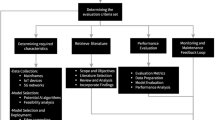Abstract
In order to reduce the costs of industrial testing of analog and Radio Frequency (RF) integrated circuits, a widely studied solution is indirect testing. Indeed, indirect testing is based on learning-machine algorithms to train a regression model that links the space of low-cost indirect measurements to the space of performance parameters guaranteed by datasheets, thus relaxing the constraints on expensive test equipment. This article explores the potential benefit of using ensemble learning in this context. Unlike traditional learning models that use a single model to estimate targeted parameters, ensemble-learning models involve training several individual regression models and combining their outputs to improve the predictive power of the ensemble model. Different ensemble methods based on bagging, boosting or stacking are investigated and compared to classical individual models. Experiments are performed on three RF performances of a LNA for which we have production test data and model quality is discussed in terms of goodness-of-fit, accuracy and reliability. The influence of the training set size is also explored. Finally, the efficiency of classical and ensemble models is compared in the context of a two-tier test flow that permits to tradeoff test cost and test quality.










Similar content being viewed by others
References
Abdallah L et al (2010) Sensors for built-in alternate RF test. Proc. IEEE European Test Symposium (ETS), pp 49–54
Ayari H et al. (2012) Smart selection of indirect parameters for DC-based alternate RF IC testing. Proc. IEEE VLSI Test Symposium (VTS), pp. 19–24
Ayari H et al. (2012) Making predictive analog/RF alternate test strategy independent of training set size. Proc. IEEE International Test Conference (ITC), p.9
Barragan MJ, Leger G (2013) Efficient selection of signatures for analog/RF alternate test. Proc. European Test Symposium (ETS), p.6
Barragan MJ, Leger G (2015) A procedure for alternate test feature design and selection. IEEE Design Test 32(1):18–25
Barragan MJ et al. (2011) Improving the accuracy of RF alternate test using multi-VDD conditions: application to envelope-based test of LNAs. Proc. IEEE Asian Test Symposium (ATS), pp. 359–364
Barragan MJ et al. (2019) On the use of causal feature selection in the context of machine-learning indirect test. Proc. Design Automation Test Conference (DATE), pp. 276–279
Carballido J et al (2013) A programmable calibration/BIST engine for RF and analog blocks in SoCs integrated in a 32 nm CMOS WiFi transceiver. IEEE J Solid State Circuits 48(7):1669–1679
Dimakos A, et al. (2015) Test and calibration of RF circuits using built-in non-intrusive sensors. Proc. IEEE Computer Society Annual Symp. on VLSI (ISVLSI), pp. 627–627
Dimakos A et al (2015) Parametric built-in test for 65nm RF LNA using non-intrusive variation-aware sensors. J Electron Test 31:381–394
El Badawi H et al. (2019) Which metrics to use for RF indirect test strategy?. Proc. International Conf. on Synthesis, Modeling, Analysis and Simulation Methods and Applications to Circuit Design (SMACD), p.4
El Badawi H et al. (2019) Use of ensemble methods for indirect test of RF circuits: Can it bring benefits?. Proc. IEEE Latin American Test Symposium (LATS), pp. 1–6
Ellouz S et al. (2006) Combining internal probing with artficial neural networks for optimal RFIC testing. Proc. IEEE International Test Conference (ITC), p.9
Gil VG, Gines Arteaga AJ, Léger G (2019) Assessing AMS-RF test quality by defect simulation. IEEE Trans Device Mater Reliab 19(1):55–63
Guyon I, Elisseeff A (2003) An introduction to variable and feature selection. J Mach Learn Res 3:1157–1182
Kansara P et al (2018) Dynamic analog/RF alternate test strategies based on on-chip learning. J Electron Test 34:337–349
Larguech S et al (2015) Efficiency evaluation of analog/RF alternate test: Comparative study of indirect measurement selection strategies. Microelectron J 46(11):1091–1102
Larguech S, et al. (2015) A framework for efficient implementation of analog/RF alternate test with model redundancy. Proc. IEEE Computer Society Annual Symp. on VLSI (ISVLSI), pp. 621–626
Stratigopoulos H (2018) Machine learning applications in IC testing. Proc. IEEE European Test Symposium (ETS), p.10
Stratigopoulos H, Makris Y (2008) Error moderation in low-cost machine-learning-based analog/RF testing. IEEE Trans Comput Aided Des Integr Circuits Syst 27(2):339–351
Stratigopoulos H, Mir S (2012) Adaptive alternate analog test. IEEE Des Test Comput 29(4):71–79
Stratigopoulos H-G et al (2009) Enrichment of limited training sets in machine-learning-based analog/RF test. Proc. Design Automation Test Conference (DATE), pp 1668–1673
Variyam PN, Chatterjee A (1998) Enhancing test effectiveness for analog circuits using synthesized measurements. Proc. IEEE VLSI Test Symposium (VTS), pp. 132–137
Variyam PN et al (2002) Prediction of analog performance parameters using fast transient testing. IEEE Trans Comput-Aided Des Integr Circuits Syst 21(3):349–361
Zhou Z-H (2012) Ensemble methods: foundations and algorithms, Chapman and Hall/CRC, Machine Learning & Pattern Recognition Series, 1st Edition
Acknowledgments
This work has been carried out under the framework of PENTA-EUREKA project “HADES: Hierarchy-Aware and secure embedded test infrastructure for Dependability and performance Enhancement of integrated Systems”.
Author information
Authors and Affiliations
Corresponding author
Additional information
Responsible Editor: L. M. Bolzani Pöhls
Publisher’s Note
Springer Nature remains neutral with regard to jurisdictional claims in published maps and institutional affiliations.
Rights and permissions
About this article
Cite this article
El Badawi, H., Azais, F., Bernard, S. et al. Investigations on the Use of Ensemble Methods for Specification-Oriented Indirect Test of RF Circuits. J Electron Test 36, 189–203 (2020). https://doi.org/10.1007/s10836-020-05868-3
Received:
Accepted:
Published:
Issue Date:
DOI: https://doi.org/10.1007/s10836-020-05868-3




